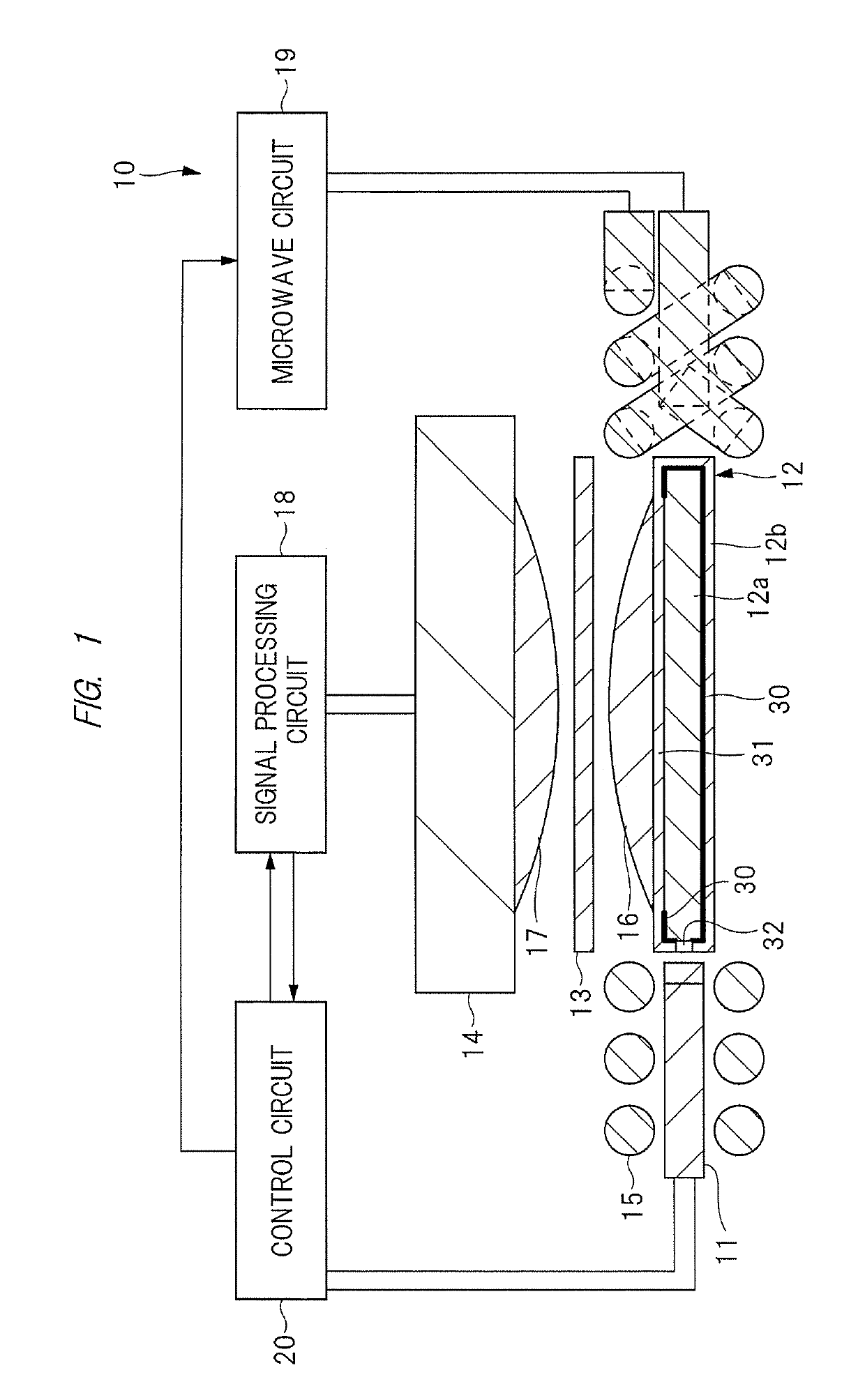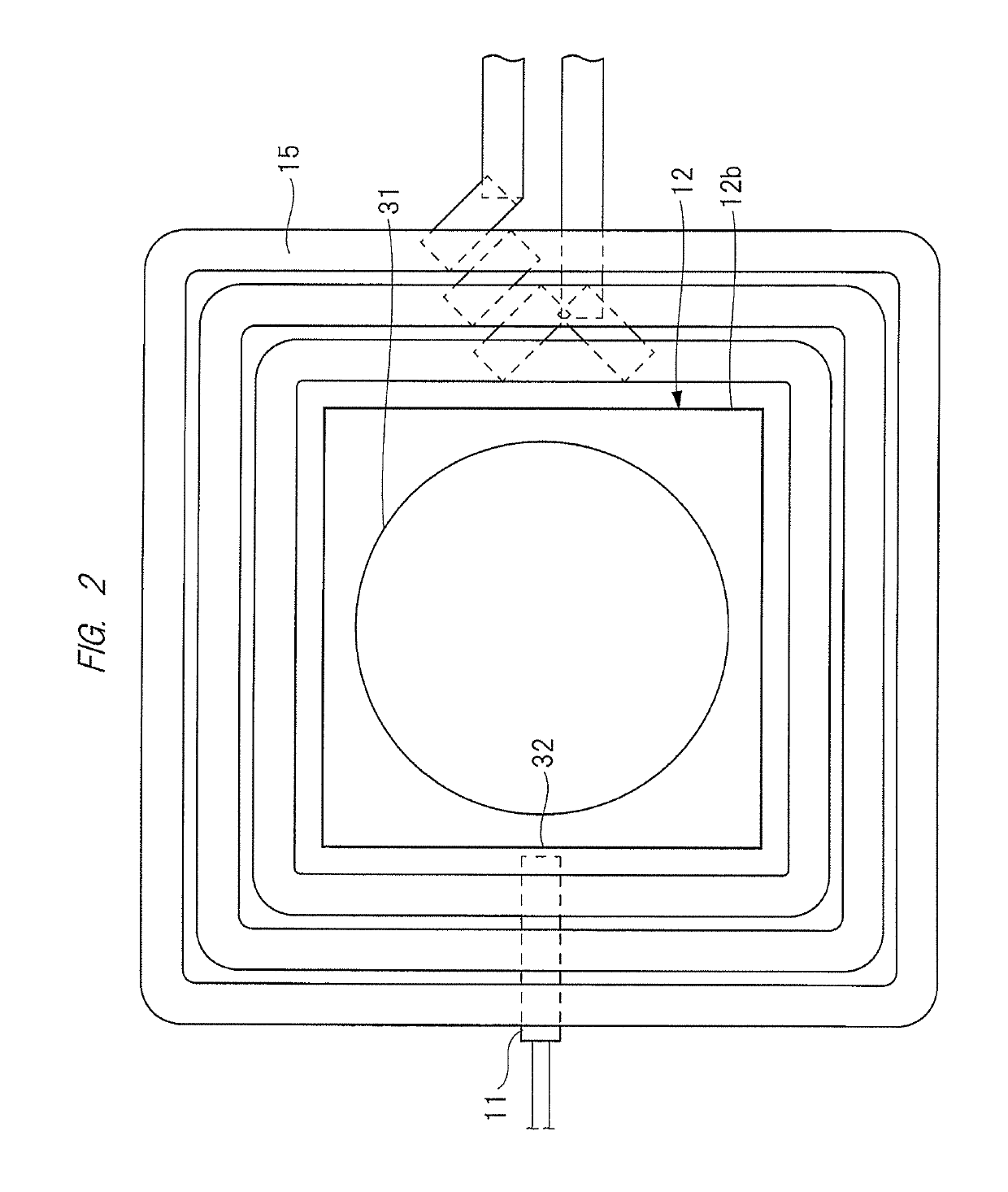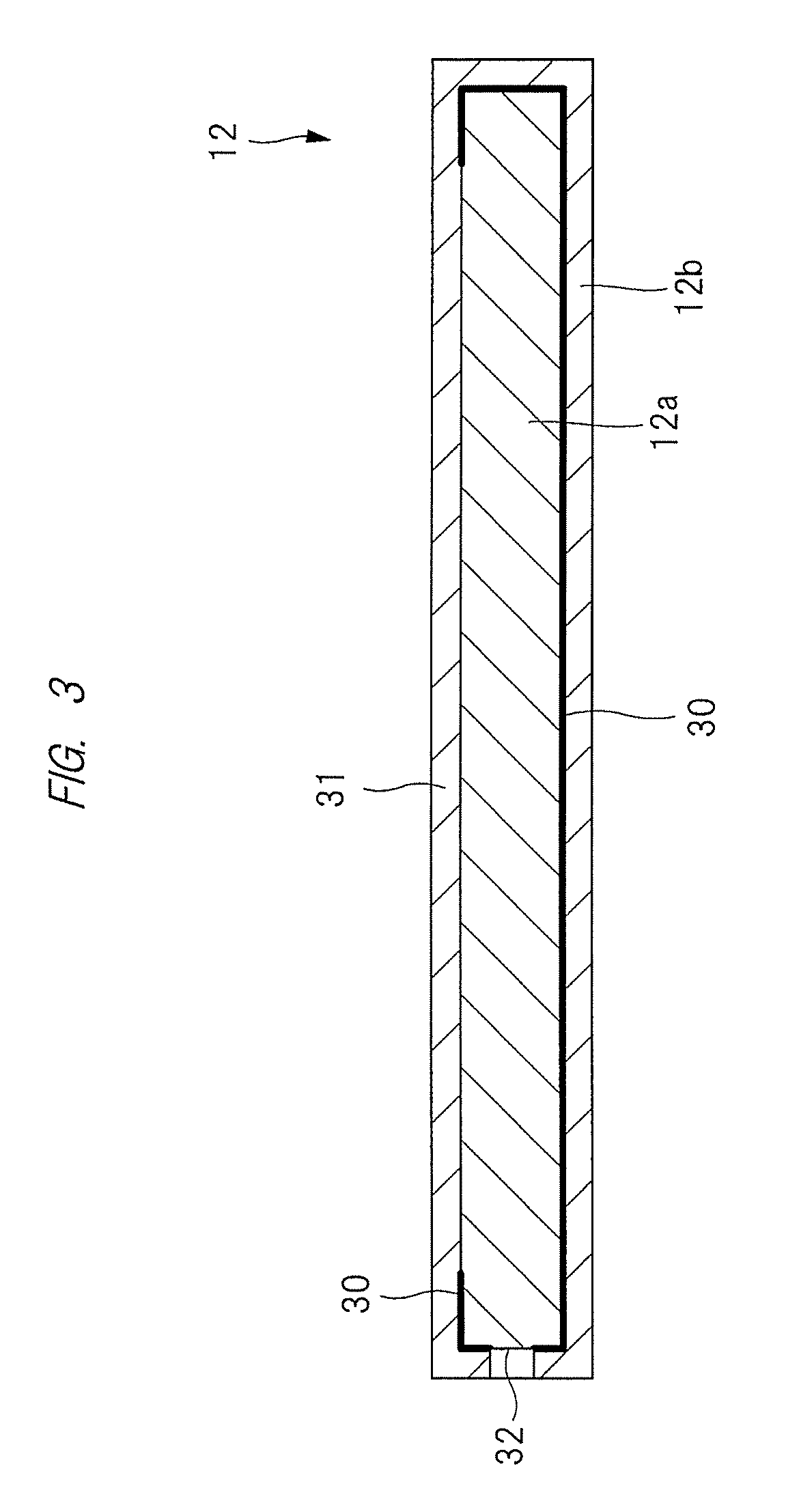Magnetometer
a magnetometer and optical sensor technology, applied in the field of magnetometers, can solve the problems of increasing the size of various kinds of devices, and achieve the effect of improving sensitivity and enhancing fluorescence collection efficiency
- Summary
- Abstract
- Description
- Claims
- Application Information
AI Technical Summary
Benefits of technology
Problems solved by technology
Method used
Image
Examples
first embodiment
[0058]
[0059]FIG. 1 is an explanatory drawing showing an example of a structure of a magnetometer according to a first embodiment. FIG. 2 is a plan view of a diamond sensor unit and a microwave coil included in the magnetometer shown in FIG. 1.
[0060]A magnetometer 10 has a module package structure, and the magnetometer 10 is made thinner and smaller. As shown in FIG. 1 and FIG. 2, the magnetometer 10 includes an excitation light source 11, a diamond sensor unit 12, a low-pass filter 13, a photodiode 14, a microwave coil 15, lenses 16 and 17, a signal processing circuit 18, a microwave circuit 19, and a control circuit 20.
[0061]The lens 16 which is a first lens is provided on the diamond sensor unit 12. More specifically, the lens 16 is provided on a fluorescence output window 31 formed in a diamond sensor case 12b described later.
[0062]The low-pass filter 13 is provided above the lens 16 at a certain distance from the lens 16. The photodiode 14 which is a fluorescence intensity detec...
second embodiment
[0125]
[0126]In the structure according to the first embodiment described above, excitation light is incident from a side surface of the diamond sensor case 12b. Meanwhile, a technique for allowing excitation light to be incident obliquely from above the diamond sensor case 12b will be described in the second embodiment.
[0127]
[0128]FIG. 6 is an explanatory drawing showing an example of across section of the magnetometer 10 according to the second embodiment. FIG. 7 is a plan view of FIG. 6. Note that the signal processing circuit 18, the microwave circuit 19, and the control circuit 20 are omitted for simplification in FIG. 6 and FIG. 7.
[0129]A difference between the magnetometer 10 shown in FIG. 6 and the magnetometer 10 in FIG. 1 according to the first embodiment described above lies in that excitation light from the excitation light source 11 is not incident on a side surface of the diamond sensor case 12b, but incident obliquely from above a back surface of the diamond sensor cas...
third embodiment
[0143]
[0144]The magnetometer 10 according to the first embodiment described above has a structure in which one lens is provided for one diamond sensor unit 12. Meanwhile, a case in which a plurality of lenses are provided for one diamond sensor unit 12 will be described in the third embodiment.
[0145]
[0146]FIG. 8 is an explanatory drawing showing an example of a cross section of the magnetometer 10 according to the third embodiment. FIG. 9 is a plan view of FIG. 8. FIG. 9 is a plan view of the magnetometer 10 viewed from a magnetism measurement surface, that is, a main surface of the diamond sensor 12a. Note that the signal processing circuit 18, the microwave circuit 19, and the control circuit 20 are omitted for simplification in FIG. 8 and FIG. 9.
[0147]A difference between the magnetometer 10 shown in FIG. 8 and FIG. 9 and the magnetometer 10 in FIG. 1 and FIG. 2 according to the above-described first embodiment lies in that each of the lenses 16 and 17 is not formed of a single l...
PUM
 Login to View More
Login to View More Abstract
Description
Claims
Application Information
 Login to View More
Login to View More - R&D
- Intellectual Property
- Life Sciences
- Materials
- Tech Scout
- Unparalleled Data Quality
- Higher Quality Content
- 60% Fewer Hallucinations
Browse by: Latest US Patents, China's latest patents, Technical Efficacy Thesaurus, Application Domain, Technology Topic, Popular Technical Reports.
© 2025 PatSnap. All rights reserved.Legal|Privacy policy|Modern Slavery Act Transparency Statement|Sitemap|About US| Contact US: help@patsnap.com



